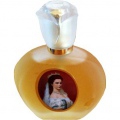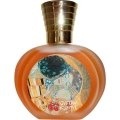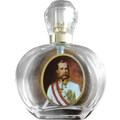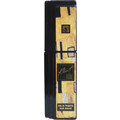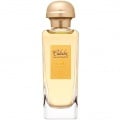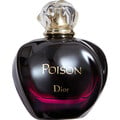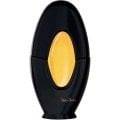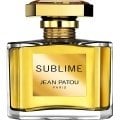12/30/2018

Serenissima
608 Reviews
Translated
Show original

Serenissima
Top Review
19
Vienna around 1900: an eventful epoch - a fragrance! (a time travel)
This must have been a crazy time: Emperor Franz Joseph II ruled the Hofburg for more than fifty years. "The Old Emperor" was a constant in Vienna's life; although not exactly progressive.
Modernity" developed with power as the opposite pole.
Especially in art and culture there were great upheavals; the art association "Wiener Secession" alone moved the minds. Some were horrified - others happy: finally something is happening!
Gustav Klimt, whose centennial of death is 2018, was one of the founding fathers, together with Joseph Hoffmann and Koloman Moser, who later founded the "Wiener Werkstätten", still known today. The term "Art Nouveau" was born here.
This movement did not only include art: it changed the whole life - if one allowed it.
In the Berlin "Bröhan-Museum" at Charlottenburg Castle many works, especially of everyday use, such as furniture, crockery and cutlery, are exhibited: much without frills and very functional!
The "most beautiful woman of the city", the "Muse of Vienna", also caused a stir in Vienna: Alma Schindler-Mahler-Gropius-Werfel.
Married to Gustav Mahler, for the sake of which she put her own art, music, completely aside (the "master" did not tolerate any other "gods" beside him!). This renunciation led to dissatisfaction, which Alma tried to alleviate by having an affair with Walter Gropius. Standing between the two men, she finally chose Gustav Mahler; but after his death she actually married Walter Gropius.
It is said that the name "Bauhaus" goes back to them; it encompasses Walter Gropius' dream "to unite under one roof everything that has to do with building".
Alma finally left Gropius after meeting Franz Werfel: he was to become her last husband!
She also entertained lively loves: Alexander Zemlinsky, with whom she took piano lessons, was the first, albeit "almost" Platonic lover. Mahler's death was followed by the painter Oskar Kokoschka. (He was commissioned much later with the painting by Konrad Adenauer for the so-called "Kanzler-Galerie".)
Kokoschka's famous painting "The Wind Bride" shows him and the sleeping Alma Mahler in the eye of the hurricane. A real storm was ignited - Vienna had another "excitement".
Alma really covered almost all cultural areas at that time: Music by Gustav Mahler and previously Alexander Zemlinsky; architecture by Walter Gropius; literature - Franz Werfel and painting by Oskar Kokoschka and also Gustav Klimt. This "relationship", however, was immediately prevented in the emergence of Alma's mother and her stepfather.
Gustav Klimt was a well-known figure in his coat. In the Viennese salons, he was not the only one to be torn around; the "mouths" of him were also torn apart. He was versatile and not only active as a painter and "womanizer".
For example, many of the then scandalous "Reform" dresses, which found great approval and sales in the haute couture salon of the "Schwestern Flöge", were designed by him. This was led by his lifelong lover Emilie Flöge with her two sisters.
Despite all his amours, Emilie remained the only love of his life, his muse and his most frequent model.
Gustav Klimt never lacked the kind of willing women he wanted to be his model: whether he really had at least a short-term relationship with each of the well-known Viennese women he portrayed remains his secret.
Thus "Gustav Klimt Vienne 1901 "Judith" EdP" (the full name of this fragrance) also adorns a portrait of the Adele Bloch builders (the "Golden Adele"); an excerpt from the painting "Judith and Holofernes" completed in 1901. The severed head of the Holofernes is barely visible at the edge.
"Gustav Klimt Vienne 1907 "Der Kuss" EdP" shows the famous "kiss scene" between Gustav Klimt and Emilie Flöge; the painting was completed in 1907/08.
When I accidentally bought a miniature of "Vienne 1901", the content immediately told me many stories from this eventful epoch.
However, this acquisition also triggered an unexpected search The scents mentioned in Rosaviola's comment were not compatible with my sensations and randomly found notes: I smelled violets!
As we both researched afterwards: we came to no common denominator!
So I finally contacted "Klimt Parfums Salzburg" and got not only an answer, but also a list of the scents of both "old" scents with photos. (A reformulation also took place here.)
(Mr. Kurt Kornfeld of "Klimt Parfums Salzburg" at this point once again many thanks!)
"Vienne 1901" contains many of my favorite fragrances; most a little unfashionable, but no less beloved.
The prelude by a generous bouquet of white jasmines, the so wonderfully large-flowered, is already quite powerful. It reminds of a heavy white velvet dress with wonderful wrinkle fall.
Violets and lilies of the valley (for some here two heavy guns) join the jasmine; the brilliance of the aldehydes is also convincing here: a full-bodied, luminous scented painting is created: the velvet begins to shimmer!
Fruity ripe raspberries and peaches bring a little tangyness in the form of light acidity to this melange. But then the rose clearly shows: Friends! Here the blossoms rule, not the fruits!
An evening stroll through a warm early summer flowering garden becomes apparent here.
The slightly eroticizing base notes - each fragrance can be a problem in itself, but also fascinating - complete a beguiling fragrance composition here.
"Vienne 1901" is really not easy to bear; it must be the right day for this trip to decadent Vienna! A day to which at least one glass of rosé champagne goes!
Then, however, an extraordinary fragrance develops; a piece of perfume art from the old school!
The shelf life is exceptional, so you may want to consider beforehand if it is the right day for this fragrance: it is very faithful - not to say very, very affectionate!
"Vienne 1901" tells lively stories from a long past time, conjures up impressive paintings and rushing sounds!
The decision, if you want to allow this, is up to you: I love these time travels!
(Maybe I will be able to test a few drops of "Klimt Parfum Vienne 1907 "Der Kuss" EdP"; a comparison of the two fragrances might be interesting.)
Modernity" developed with power as the opposite pole.
Especially in art and culture there were great upheavals; the art association "Wiener Secession" alone moved the minds. Some were horrified - others happy: finally something is happening!
Gustav Klimt, whose centennial of death is 2018, was one of the founding fathers, together with Joseph Hoffmann and Koloman Moser, who later founded the "Wiener Werkstätten", still known today. The term "Art Nouveau" was born here.
This movement did not only include art: it changed the whole life - if one allowed it.
In the Berlin "Bröhan-Museum" at Charlottenburg Castle many works, especially of everyday use, such as furniture, crockery and cutlery, are exhibited: much without frills and very functional!
The "most beautiful woman of the city", the "Muse of Vienna", also caused a stir in Vienna: Alma Schindler-Mahler-Gropius-Werfel.
Married to Gustav Mahler, for the sake of which she put her own art, music, completely aside (the "master" did not tolerate any other "gods" beside him!). This renunciation led to dissatisfaction, which Alma tried to alleviate by having an affair with Walter Gropius. Standing between the two men, she finally chose Gustav Mahler; but after his death she actually married Walter Gropius.
It is said that the name "Bauhaus" goes back to them; it encompasses Walter Gropius' dream "to unite under one roof everything that has to do with building".
Alma finally left Gropius after meeting Franz Werfel: he was to become her last husband!
She also entertained lively loves: Alexander Zemlinsky, with whom she took piano lessons, was the first, albeit "almost" Platonic lover. Mahler's death was followed by the painter Oskar Kokoschka. (He was commissioned much later with the painting by Konrad Adenauer for the so-called "Kanzler-Galerie".)
Kokoschka's famous painting "The Wind Bride" shows him and the sleeping Alma Mahler in the eye of the hurricane. A real storm was ignited - Vienna had another "excitement".
Alma really covered almost all cultural areas at that time: Music by Gustav Mahler and previously Alexander Zemlinsky; architecture by Walter Gropius; literature - Franz Werfel and painting by Oskar Kokoschka and also Gustav Klimt. This "relationship", however, was immediately prevented in the emergence of Alma's mother and her stepfather.
Gustav Klimt was a well-known figure in his coat. In the Viennese salons, he was not the only one to be torn around; the "mouths" of him were also torn apart. He was versatile and not only active as a painter and "womanizer".
For example, many of the then scandalous "Reform" dresses, which found great approval and sales in the haute couture salon of the "Schwestern Flöge", were designed by him. This was led by his lifelong lover Emilie Flöge with her two sisters.
Despite all his amours, Emilie remained the only love of his life, his muse and his most frequent model.
Gustav Klimt never lacked the kind of willing women he wanted to be his model: whether he really had at least a short-term relationship with each of the well-known Viennese women he portrayed remains his secret.
Thus "Gustav Klimt Vienne 1901 "Judith" EdP" (the full name of this fragrance) also adorns a portrait of the Adele Bloch builders (the "Golden Adele"); an excerpt from the painting "Judith and Holofernes" completed in 1901. The severed head of the Holofernes is barely visible at the edge.
"Gustav Klimt Vienne 1907 "Der Kuss" EdP" shows the famous "kiss scene" between Gustav Klimt and Emilie Flöge; the painting was completed in 1907/08.
When I accidentally bought a miniature of "Vienne 1901", the content immediately told me many stories from this eventful epoch.
However, this acquisition also triggered an unexpected search The scents mentioned in Rosaviola's comment were not compatible with my sensations and randomly found notes: I smelled violets!
As we both researched afterwards: we came to no common denominator!
So I finally contacted "Klimt Parfums Salzburg" and got not only an answer, but also a list of the scents of both "old" scents with photos. (A reformulation also took place here.)
(Mr. Kurt Kornfeld of "Klimt Parfums Salzburg" at this point once again many thanks!)
"Vienne 1901" contains many of my favorite fragrances; most a little unfashionable, but no less beloved.
The prelude by a generous bouquet of white jasmines, the so wonderfully large-flowered, is already quite powerful. It reminds of a heavy white velvet dress with wonderful wrinkle fall.
Violets and lilies of the valley (for some here two heavy guns) join the jasmine; the brilliance of the aldehydes is also convincing here: a full-bodied, luminous scented painting is created: the velvet begins to shimmer!
Fruity ripe raspberries and peaches bring a little tangyness in the form of light acidity to this melange. But then the rose clearly shows: Friends! Here the blossoms rule, not the fruits!
An evening stroll through a warm early summer flowering garden becomes apparent here.
The slightly eroticizing base notes - each fragrance can be a problem in itself, but also fascinating - complete a beguiling fragrance composition here.
"Vienne 1901" is really not easy to bear; it must be the right day for this trip to decadent Vienna! A day to which at least one glass of rosé champagne goes!
Then, however, an extraordinary fragrance develops; a piece of perfume art from the old school!
The shelf life is exceptional, so you may want to consider beforehand if it is the right day for this fragrance: it is very faithful - not to say very, very affectionate!
"Vienne 1901" tells lively stories from a long past time, conjures up impressive paintings and rushing sounds!
The decision, if you want to allow this, is up to you: I love these time travels!
(Maybe I will be able to test a few drops of "Klimt Parfum Vienne 1907 "Der Kuss" EdP"; a comparison of the two fragrances might be interesting.)
13 Comments

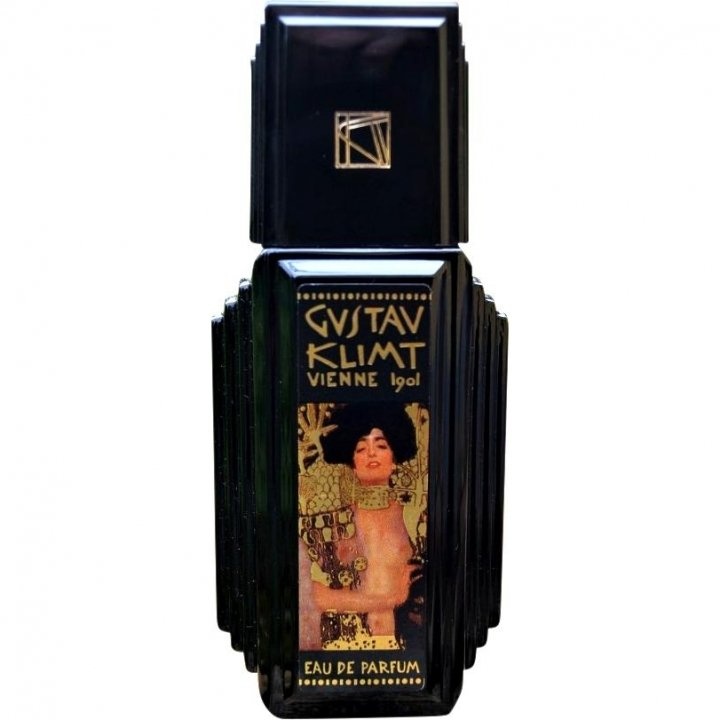


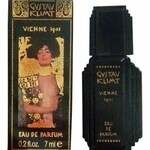
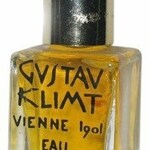
 Top Notes
Top Notes 
 Heart Notes
Heart Notes 





 Base Notes
Base Notes 


